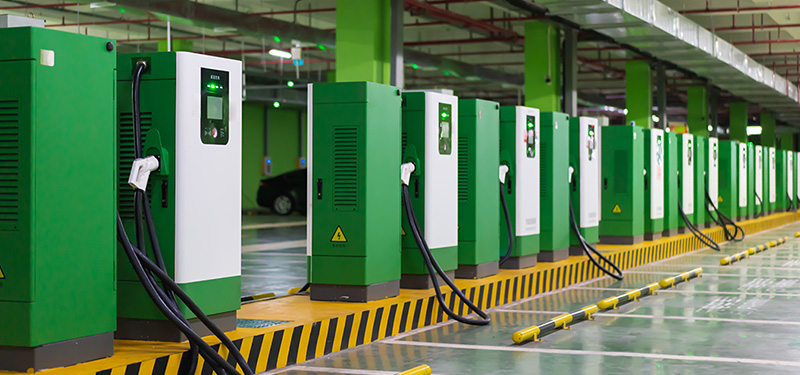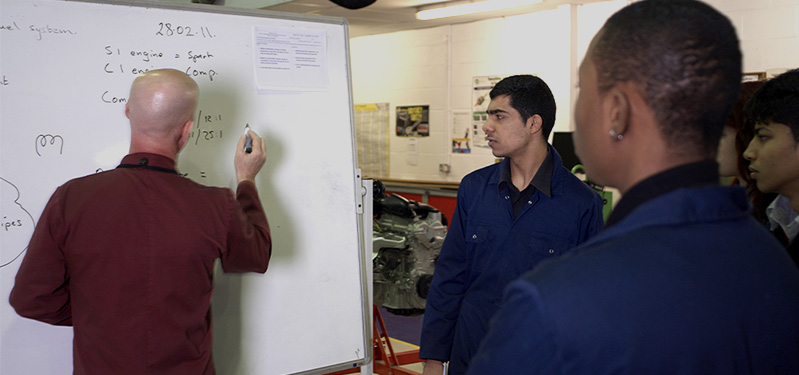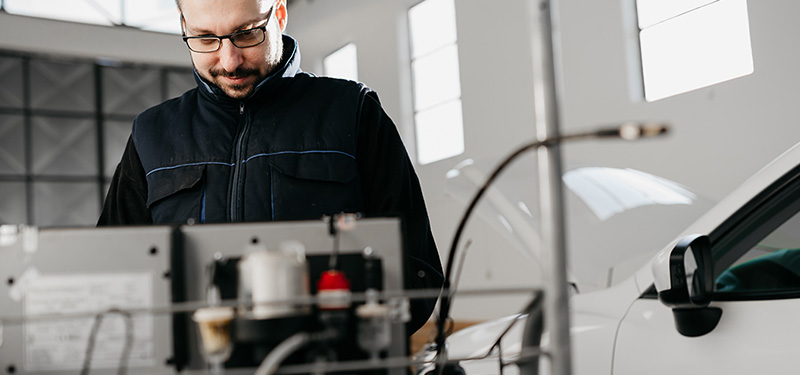Electric Cars Still Need Maintenance
Reduced maintenance and repair costs are one of the primary reasons to buy an electric vehicle. Electric motors, with just a few moving parts, are significantly less complex than gasoline engines, which have hundreds, and don’t require oil changes, valve adjustments, spark plug replacements, and other expensive services. EVs also don’t have complex transmissions, or fuel systems that can rust out.
Thanks to their big, heavy batteries, electric cars are likely to go through tires and brakes more frequently than their gasoline counterparts, and their other systems’ life cycles will be similar – so EVs will still need maintenance over time as they accumulate mileage and wear and tear. It’s just that the maintenance required will be different – and you won’t need to worry about major engine-and-transmission related expenses.

Investing in Infrastructure
In order to prepare themselves to service the cars of the future, car dealers are having to make serious investments to their facilities, often spending millions of dollars to make upgrades to support electric vehicles.
Charging infrastructure is one important area. As more and more EVs hit the road, and eventually end up in service departments, they need to be charged – to maintain battery level during service, and also for customer convenience (so they can drive home in a car with a full charge). These days, that means dealers have to install level 3 DC fast chargers, often at a cost of hundreds of thousands, even millions, of dollars. Given the sheer volume of electricity needed, dealership charging systems often have a huge “battery” where energy is trickled in from the grid, and then quickly transferred to customer vehicles. These battery solutions require sophisticated transformers that require special cooling and cabling far beyond normal commercial electrical installations.
Dedicated service bays in the workshop for electric vehicles require their own charging infrastructure, too, at a cost of about $15,000 on top of any special tools and equipment needed to work on specific EVs. Indeed, these work bays also have to be designated as high-voltage bays, and must be physically isolated from the rest of the workshop (typically with a physical barrier). Technicians have to wear specific personal protective equipment (PPE) such as gloves, face shields, and even special clothing, and the high-voltage bay must be inspected and certified twice-yearly.
These work bays are supported by a raft of special equipment, which can cost hundreds of thousands of dollars. Special lifting tables are required to remove large, heavy batteries from vehicles, and tools to work on the specialized cooling systems in EVs are also required. And, because those big batteries need to be moved around, most dealerships servicing EVs have had to buy a forklift!

High Voltage Rooms and Training
New dealerships being built also require a high-voltage room, with its own fire-coded double-thickness ceiling and its own ventilation system. This allows the dealership to isolate a battery or an EV in a critical state. An external battery bunker serves a similar purpose, reducing the risk to dealership staff.
Because of the unique dangers posed by working on high voltage electrical systems, technicians need special training before they are able to work on EVs. Depending on the manufacturer, this could mean that a technician has had to achieve master certification before they’re allowed to even take EV training. The training alone typically consists of four to five courses, each of which takes several days to complete, with work experience between the training. Full EV certification can take up to a year, or more.

Looking at the Future
EVs are still a relatively new phenomenon, so it’s hard to know for sure exactly what they will need in the years down the road. The important thing to remember is that they are still cars – and still have many of the features that any car has: heating and air conditioning; suspensions, brakes, wheels, and tires; electronic systems. And while a battery and an electric motor is a relatively simple system compared to what powers a gasoline car, there’s still a cooling system with liquid, pipes, pumps, and control units. All will require service or repair at some time in the future.
And as EVs acquire more and more autonomous driving technology – almost all have some form of active cruise control, and many can already steer for themselves in limited situations – the importance of having properly calibrated sensors for sophisticated driver assist systems will only increase. Radar systems, cameras, proximity sensors, LIDAR, and the electronics that connect all of them to your car’s drivetrain, brakes, and steering, need to be working perfectly to actually be safe – and to actually keep you safe.
Many dealers were concerned at the beginning of the electric revolution that repair and maintenance will go away; the prevailing wisdom is now that electric cars are still cars – and will still require service. It’s just the form that service will take may be very different in the future.

















